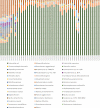A metagenomic assessment of bacterial community in spices sold open-air markets in Saint-Louis, Senegal
- PMID: 38926602
- PMCID: PMC11208442
- DOI: 10.1038/s41598-024-65756-0
A metagenomic assessment of bacterial community in spices sold open-air markets in Saint-Louis, Senegal
Abstract
Natural spices play an essential role in human nutrition and well-being. However, their processing on different scales can expose them to potential sources of contamination. This study aimed to describe the bacterial community genomic footprint in spices sold in Senegal. Spice samples were collected in August 2022 in Saint-Louis, Senegal. The genomic region coding bacterial 16S rRNA was then amplified and sequenced using Oxford Nanopore Technology (ONT). Sequencing was carried out on two batches of samples, one containing part of the "Local Spices or Herbs" (n = 10), and the other, a mixture of 7 spices, Curcuma, Thyme and the other part of the "Local Spices or Herbs" (n = 39). Results showed high bacterial diversity and the predominance of Escherichia coli and Salmonella enterica in samples, with total reads of 65,744 and 165,325 for the two batches, respectively. The sample category "Homemade mixture of food condiments ", which includes all "Local Spices or Herbs" samples, showed remarkable bacterial diversity. These were followed by Curcuma, a blend of 7 spices and thyme. Also, the different categories of spices studied show similarities in their bacterial composition. These results highlight the microbial community's highly diverse genomic profile, including pathogenic bacteria, in spice samples.
Keywords: Bacterial community; Metagenomic; Sequencing; Spices.
© 2024. The Author(s).
Conflict of interest statement
The authors declare no competing interests.
Figures




References
MeSH terms
Substances
LinkOut - more resources
Full Text Sources

